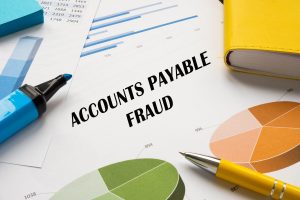LSL Webinar “Back to Basics: Lease and SBITA Accounting: Year Two and Beyond,” presented by Christian Townes, Partner and Amber Haston, Manager, addressed challenges faced by governmental agencies in complying with GASB 87 and GASB 96 requirements and provided a detailed approach to updating leases and SBITAs each year.
In case you missed it – this article will lay out the step-by-step approach that LSL employs to analyze and record leases and SBITAs, providing a comprehensive guide from start to finish. You can pin this post, save the link, or print out the steps to keep as a handy reference for future use, ensuring you have the guidance you need at your fingertips.
Lessons Learned from GASB 87/96
As LSL has been working through implementations over the last couple of years, we’ve developed an approach that we believe is efficient, thorough, and results in finalizing the annual lease and SBITA analysis sooner than you thought possible. While working with dozens of clients, we’ve had the opportunity to gain valuable insights, including the importance of staying current with GASB standards, preparing early (even before the end of the year!), considering separate expense accounts for easier tracking, planning for challenges, and documenting everything. The GASBs were far more complex than most organizations were prepared for, which is why we recommend starting early to avoid delays in closing the books and conducting your annual audit.
LSL’s Approach to Year-End Close
LSL’s approach to the year-end close process includes: reviewing the prior year workpaper, reviewing software information, reading the minutes for new agreements, meeting with departments, reviewing general ledger activity, gathering relevant data, determining qualification, entering relevant info into the tool, and evaluating output for accuracy. Let’s break it down step-by-step:
Step 1: Review the Prior Year Workpaper
Review leases and SBITAs from the prior year and identify if any balances will be zero at year end. For the items that will be zero at year end, consider the type and nature of the agreement and assets in question. For instance, if it is a lease, consider whether your organization still owns the land, or if it is a SBITA, whether or not your organization still uses the software. Perhaps the land was sold. Perhaps the previous software agreement expired and your organization chose a replacement software. Each one needs to be evaluated to identify whether or not changes need to be made.
Step 2: Review Software Information
If available, utilize software for lease/SBITAs to examine and manage items or contracts that are nearing their expiration or termination dates. This helps ensure that these items are properly reviewed, and any necessary actions are taken before they expire.
Step 3: Read the Minutes
Identify agendas/minutes with new agreements and reviewing prior fiscal year minutes to identify new agreements, amendments, or modifications to existing Leases/SBITAs.
Step 4: Meet with Departments,
It is recommended to engage departments early and often, at least twice yearly, to keep information fresh and limit a backlog of new items to evaluate.
Step 5: Review GL Activity
Thoroughly examine the General Ledger (GL) to identify and analyze account details, particularly revenue and expense accounts, that might contain transactions related to leases or subscription-based information technology arrangements (SBITAs). This process helps ensure that these transactions are accurately recorded and managed within the GL.
Step 6: Gather Relevant Data
Confirm software is active as of FYE and gathering lease/SBITA payment data, terms, incremental borrowing rate, and supporting documentation.
Step 7: Does it Qualify?
Evaluate whether amended items still qualify and prioritizing the review of terms to exclude short-term agreements.
Step 8: Enter Relevant Info into Tool
Use software, if confirmed, for amended items and inputting new leases/SBITAs as a new entry.
Step 9: Evaluate Output for Accuracy
Review calculations for inconsistencies and red flags.
Step 10: Review Journal Entries
Review the output to ensure the account numbers are correct, especially for your conversion entries form modified accrual to full accrual. Also review the entries for unusual items that may indicate you’ve entered amounts into the wrong field.
Throughout the process, it’s crucial to document everything, plan for challenges, and aim to complete the process early to avoid delays.
Conclusion
The last few years have been a challenge with the implementation of GASB 87 and GASB 96 but those implementations are behind us. With these tried and true steps, your organization can work through your annual evaluations of leases and SBITAs seamlessly. Consider including these steps in your year end close process and start early.
For any questions or further assistance, contact us here today!




